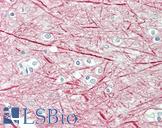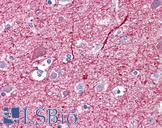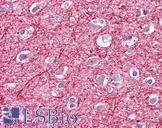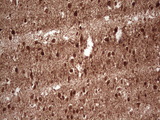Login
Registration enables users to use special features of this website, such as past
order histories, retained contact details for faster checkout, review submissions, and special promotions.
order histories, retained contact details for faster checkout, review submissions, and special promotions.
Forgot password?
Registration enables users to use special features of this website, such as past
order histories, retained contact details for faster checkout, review submissions, and special promotions.
order histories, retained contact details for faster checkout, review submissions, and special promotions.
Quick Order
Products
Antibodies
ELISA and Assay Kits
Research Areas
Infectious Disease
Resources
Purchasing
Reference Material
Contact Us
Locations
Orders Processing,
Shipping & Receiving,
Warehouse
2 Shaker Rd Suites
B001/B101
Shirley, MA 01464
Production Lab
Floor 6, Suite 620
20700 44th Avenue W
Lynnwood, WA 98036
Telephone Numbers
Tel: +1 (206) 374-1102
Fax: +1 (206) 577-4565
Contact Us
Additional Contact Details
Login
Registration enables users to use special features of this website, such as past
order histories, retained contact details for faster checkout, review submissions, and special promotions.
order histories, retained contact details for faster checkout, review submissions, and special promotions.
Forgot password?
Registration enables users to use special features of this website, such as past
order histories, retained contact details for faster checkout, review submissions, and special promotions.
order histories, retained contact details for faster checkout, review submissions, and special promotions.
Quick Order
| Catalog Number | Size | Price |
|---|---|---|
| LS-C16811-1 | 1 ml | $930 |
Monoclonal Mouse anti‑Bovine NEFM / NF‑M Antibody (IHC, WB) LS‑C16811
Monoclonal Mouse anti‑Bovine NEFM / NF‑M Antibody (IHC, WB) LS‑C16811
Antibody:
NEFM / NF-M Mouse anti-Bovine Monoclonal Antibody
Application:
IHC, IHC-P, IHC-Fr, WB
Reactivity:
Bovine, Human
Format:
Unconjugated, Unmodified
Toll Free North America
 206-374-1102
206-374-1102
For Research Use Only
Overview
Antibody:
NEFM / NF-M Mouse anti-Bovine Monoclonal Antibody
Application:
IHC, IHC-P, IHC-Fr, WB
Reactivity:
Bovine, Human
Format:
Unconjugated, Unmodified
Specifications
Description
NF-M antibody LS-C16811 is an unconjugated mouse monoclonal antibody to NF-M (NEFM) from bovine. It is reactive with human and bovine. Validated for IHC and WB.
Target
Bovine NEFM / NF-M
Synonyms
NEFM | 160 kDa neurofilament protein | NEF3 | NF-M | NFM | Neurofilament 3
Host
Mouse
Reactivity
Bovine, Human
(tested or 100% immunogen sequence identity)
Clonality
IgG1
Monoclonal
Conjugations
Unconjugated
Purification
Tissue culture supernatant
Modifications
Unmodified
Immunogen
Neurofilament preparation isolated from calf brain tissue.
Specificity
Antigen Recognized human in Species (tested so far). Recommended for Human brain tissue. Marker for the differentiation of 160kD neurofilament peptide from other intermediate filament proteins. Useful for studying neurofilament expression and for tumor characterization (pheochromocytoma, paraganglioma, ganglioneuroblastoma, ganglioneuroma and other tumors of neuronal origin).
Applications
- IHC
- IHC - Paraffin
- IHC - Frozen
- Western blot
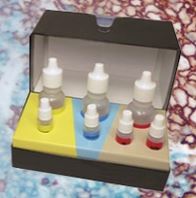
|
Performing IHC? See our complete line of Immunohistochemistry Reagents including antigen retrieval solutions, blocking agents
ABC Detection Kits and polymers, biotinylated secondary antibodies, substrates and more.
|
Usage
Suitable for use in Western Blot and Immunohistochemistry (frozen and paraffin-embedded tissue; no proteolytic treatment required). Immunohistochemistry: 1:10; Incubation Time 1 hr at room temperature.
Storage
Short term: 4°C; Long term: Add glycerol (40-50%) -20°C.
Restrictions
For research use only. Intended for use by laboratory professionals.
About NEFM / NF-M
Publications (0)
Customer Reviews (0)
Featured Products
Species:
Human, Monkey, Mouse, Rat, Bovine, Dog, Hamster, Horse, Pig, Rabbit
Applications:
IHC, IHC - Paraffin, Western blot, Peptide Enzyme-Linked Immunosorbent Assay
Species:
Rat, Human, Mouse, Rabbit, Chicken
Applications:
IHC, Immunofluorescence, Western blot, ELISA
Species:
Human, Monkey, Hamster, Xenopus
Applications:
IHC, IHC - Paraffin, IHC - Frozen, Western blot
Species:
Human, Monkey, Guinea pig, Hamster, Rabbit, Xenopus
Applications:
IHC, IHC - Paraffin, IHC - Frozen, Western blot, Flow Cytometry
Species:
Human
Applications:
IHC, IHC - Paraffin, Western blot
Species:
Rat, Human, Mouse, Rabbit, Chicken
Applications:
IHC, Immunofluorescence, Western blot, ELISA
Request SDS/MSDS
To request an SDS/MSDS form for this product, please contact our Technical Support department at:
Technical.Support@LSBio.com
Requested From: United States
Date Requested: 4/25/2024
Date Requested: 4/25/2024

